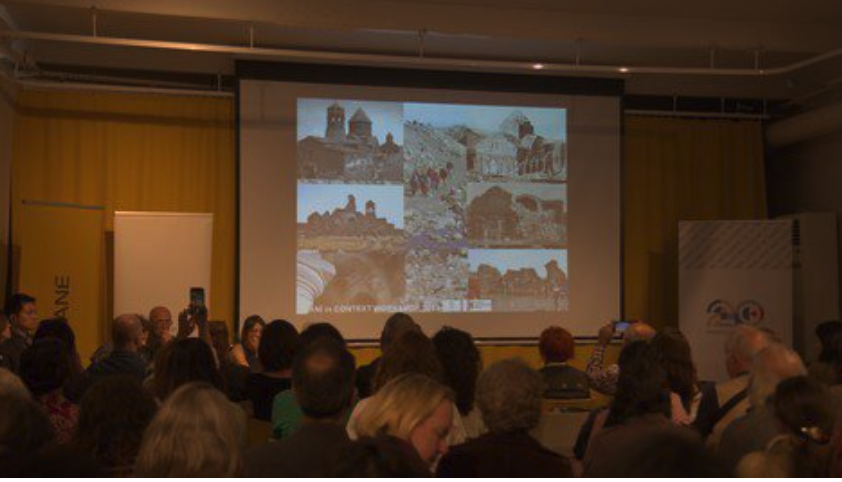The app, available in Turkish, Armenian, and English, offers a captivating journey through the UNESCO-listed archaeological site of Ani, with routes that cater to both casual explorers and those want to know it all. By Tuğçe Yılmaz and Volga Kuşçuoğlu in Bianet on June 10, 2023.
A new mobile application has been launched that offers users an immersive virtual experience of the medieval city of Ani in Kars, eastern Turkey. A significant waypoint along the illustrious Silk Road, Ani was enshrined in the UNESCO World Heritage List in 2016.
The Ani app was developed by Anadolu Kültür, a cultural non-profit founded by philanthropist Osman Kavala, who has been behind bars for over five years. The application is the third project of Anadolu Kültür regarding Ani, following the Ani and Surroundings fieldwork/publication and the Ani Exhibition. The project took four years to complete and was supported by the Calouste Gulbenkian Foundation based in Portugal and the World Monuments Fund based in the United States.
The official introduction of the mobile application took place on June 8 at Postane İstanbul. During the event, Naif Alibeyoğlu, the former Mayor of Kars, delivered a speech as well, emphasizing Kavala’s efforts for Ani. He stated their intention to revive the Ani Silk Road bridge with the normalization of Armenia-Turkey relations.
According to the information provided by Project Coordinator Çağla Parlak, the application was designed through a participatory process. Three separate international workshops were held in Yerevan, İstanbul, and Kars in 2018 and 2019 to create the content and determine the technical details of the application. These workshops were attended by individuals with expertise in various disciplines who have conducted studies on Ani.
Three languages, four routes
The texts were translated into Turkish and Armenian after undergoing an editorial process in English.
So far, more than 130 architectural structures have been unearthed in Ani. For the application, the most important of these structures and landscape areas were selected, creating 38 separate points of visitation. They were placed on the map according to coordinates, forming four different routes. The application provides general information about the history of Ani, Ani walls, the North Walls Smbat Walls, the Marr Museum, Architect Trdat, Ani’s epigraphy, Armenian traditional « Midis » stone craftsmanship, and the Armenian alphabet.
Each visitation point and title in the application is accompanied by clear and concise explanations. The information notes progress through historical, architectural, internal and external features, and architectural conservation efforts. A special dictionary was created within the application for those unfamiliar with architectural terms.
Architectural terms in the information notes are marked in blue, making it easier to click on the word and learn its meaning.
The application also includes photos, narrations, and maps for a more convenient visitor experience. Voices of volunteers such as Tilbe Saran, Görkem Yeltan, and Şenay Gürler were featured in the narration project. The translations of the texts belong to Özgün Forta and Varduhi Balyan.
Anyone who wants to explore and experience Ani medieval city along with its story can download the application for free from the App Store and Play Store.
| About Ani |
By Tuğçe Yılmaz and Volga Kuşçuoğlu in Bianet on June 10, 2023.

